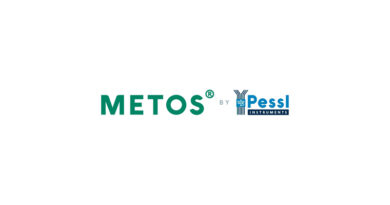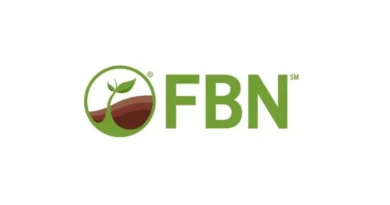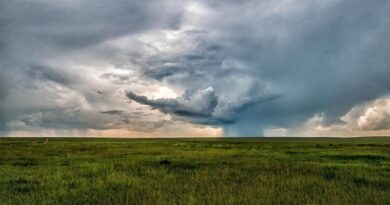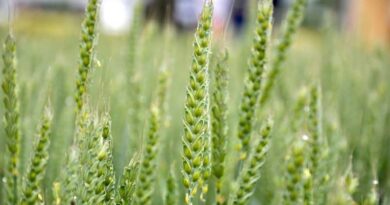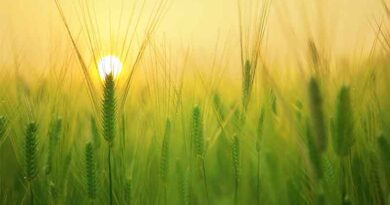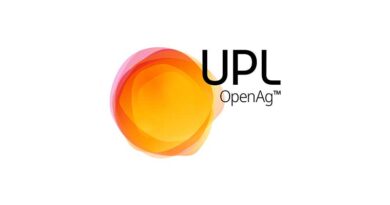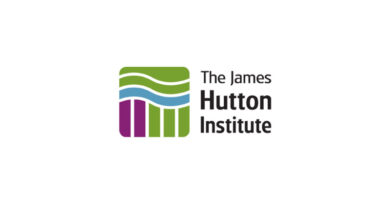In the low-temperature weather in winter, facility greenhouses turn on the heat preservation mode – agricultural cold protection shows the “technical style”
11 January 2024, China: In recent times, many places across the country have experienced strong cold wave rain and snow. This “ice and snow test” has had a serious impact on agricultural production, especially greenhouse cultivation. Due to heavy snowfall and plummeting temperatures, many greenhouses are at risk of being crushed by snow, and crops are also vulnerable to the threat of freezing damage.
In the severe winter, faced with the severe challenges brought by extreme weather to agricultural production, how to ensure the safety of crops over the winter and minimize the economic losses of farmers has become the most concerned issue for every agricultural practitioner. How to “smartly resist freezing” in agricultural production? What other “artifact” tips are there?
In the cold winter, the greenhouse is “warm”
Sweeping by the strong cold air, in mid-December last year, all parts of our country experienced significant cooling and rain and snow, which brought severe challenges to greenhouses and the growth of fruits and vegetables in them. However, in extreme weather, Shandong Shouguang has relied on its unique “magic weapon” for cold protection – greenhouses to build a “warm fortress” for the growth of fruits and vegetables.
Early in the morning on December 14, Cui Xinzhong, a farmer from Cuilingxi Village, Daotian Town, Shouguang City, remotely turned on the fill light in the greenhouse through the greenhouse smart management app. “This cold wave lasts for a long time. Continuous cloudy days will lead to low temperatures and weak light in the shed, making vegetables prone to disease. Using fill lights in continuous low temperature weather can effectively ensure the temperature of the shed.” Cui Xinzhong said.
In fact, as the “pioneer” of facility greenhouses, the vegetable greenhouses in Shouguang, Shandong Province, took into account how to prevent cold weather when they were first built. “Filling lights are only used in extremely cold weather.” Hu Yongjun, an agricultural technology extension officer at the National Vegetable Quality Standards Center, told reporters that greenhouse construction standards vary in different regions. For Shouguang, the greenhouse walls must have a certain thickness. , the depth is 60-80 cm below the water level, so that even if there is a cold wave, the temperature inside the shed can be maintained at 12 degrees Celsius or above, and the slope of the shed roof is generally relatively large, making it less likely to cause snow accumulation.
In the cold Xinjiang, facility greenhouses also come in handy.
With the outdoor temperature reaching minus 20 degrees Celsius, in the Fangcao Lake Farm of the Sixth Division of the Xinjiang Production and Construction Corps, the greenhouses with “no heating in winter” facilities are as warm as spring, and all kinds of fruits and vegetables are growing happily. .
Due to the cold winter in northern Xinjiang, it is difficult for fruits and vegetables to survive the winter. Growing fruits and vegetables in greenhouses requires the use of heating facilities, which consumes high energy costs. The so-called “no heating in winter” is actually the result of Xinjiang Lvfeng Agricultural Industry Science and Technology Development Co., Ltd. (hereinafter referred to as “Lvfeng Agriculture”) carrying out a series of energy-saving technologies, screening and screening of new materials in terms of greenhouse structure, thermal insulation, heat storage performance, etc. After optimization research, the “Xinjiang facility vegetable overwintering energy-saving (no heating in winter) cultivation technology system” was explored and created. This technology solves the technical problem that Xinjiang’s traditional solar greenhouses cannot produce overwintering vegetables without heating.
So, what specific technological elements does this greenhouse have? “During the day, the light-absorbing film and black mulch film made of special materials can absorb solar heat. At night, when the temperature drops, it can transport heat energy to the shed like floor heating, ensuring that the ground temperature is stable at about 10 degrees Celsius. Cold protection excavated in front of the greenhouse The ditch is filled with straw to prevent cold air from entering the seedbed soil. The design of the greenhouse wall, the angle of the light-absorbing film, and the depth of the cold-proof ditch are all very particular,” said Liu Cunping, general manager of Lufeng Agriculture.
Through accurate calculation of the “three elements” of lighting, heat preservation, and heat storage, Lvfeng Agriculture has achieved the goal of growing greenhouse vegetables under low-temperature and low-light conditions. “With the adoption of new technology, there is no need to burn coal to increase the temperature. Each greenhouse not only saves more than 4,000 yuan in costs, but also reduces environmental pollution.” Liu Cuping said.
With the support of smart devices, cold protection can be realized with automation
Early detection and early warning of disasters is a key step in reducing the impact of cold waves, and intelligent equipment plays an important role here.
In Lianghe New Village, Yucheng City, Shandong Province, the vegetable planting base installed “Greenhouse Treasure” long before the arrival of widespread rain and snow. This technology-rich IoT terminal device allows farmers to control the temperature, humidity, etc. of the greenhouse in real time. If environmental indicators encounter abnormalities, the data platform will notify farmers through text messages and phone calls to take protective measures to avoid losses.
In addition to real-time warnings, smart equipment also plays a vital role in dealing with the cold wave. Since the beginning of winter, many cold waves have hit, but Ai Zhiguo, the person in charge of Laoting Chengqi Modern Agricultural Industrial Park, is confident that the cherries in the shed can grow normally even in cold weather. Following Ai Zhiguo into the shed, the reporter found that compared with ordinary greenhouses, the shed has an additional air conditioning unit and instruments and equipment for measuring temperature and humidity.
“These devices are connected to the smart agricultural brain through a digital platform and can achieve precise management and control.” Ai Zhiguo said that when encountering heavy snow and cooling weather, the temperature control equipment in the greenhouse will automatically close the vents and turn on the heating and dehumidification function to improve the environment inside the greenhouse. To maintain conditions suitable for cherry growth, “With smart agricultural facilities, manual operations are no longer required to close and cover greenhouses. In the past, seven or eight people were required to work in each shed on snowy days, but now one person can do it.” Manage 6 smart greenhouses in the park.”
Intelligent “anti-freeze” is far more than changing snow removal, light filling, heating and other activities from manual to automatic, it is more about accurately considering multiple aspects. During the interview, the reporter learned that remote monitoring of greenhouse roller blinds, ventilation, supplementary light, temperature and humidity, water and fertilizer integration, etc., can all be accurately controlled through the collection of data from each device under the digital platform. With the blessing of digital technology, traditional greenhouses are like a layer of “technological armor” that protects crops from cold waves.
“The problem of ‘overwintering’ northern vegetables must not only be ensured in terms of hardware, but also build more sturdy solar greenhouses. At the same time, the construction of software must also keep up, such as real-time monitoring and timely warning of emergencies.” China Kong Fantao, deputy director of the Institute of Agricultural Economics and Development of the Academy of Agricultural Sciences, said that all localities need to continue to strengthen the construction of facility agriculture, and at the same time make full use of information service platforms such as “12316”, the Agricultural Weather App, and the Emergency Warning Information Release System to strengthen Building extreme weather forecast and warning capabilities.
From traditional “human defense” to modern “technical defense”, the rapid development of smart agriculture is profoundly changing the way agricultural production and disaster relief are done. Nowadays, relying on intelligent equipment, farmers can take corresponding preventive and protective measures in a timely manner to reduce crop damage and economic losses caused by snowstorms and cold waves, and have more confidence to face extreme weather such as cold waves.
Also Read: UPL to strengthen fungicide portfolio with acquisition of Corteva’s Mancozeb business
(For Latest Agriculture News & Updates, follow Krishak Jagat on Google News)



